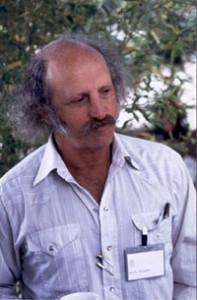
Homolog.us Introduces Video Interview Series with Respected Scientists
Dear Readers,
Over the last few months, we spoke with a number of scientists solving fundamental problems in biology and proposed about having video interviews to discuss their interesting work to our audience. We are fortunate that almost all of them agreed. Given that our community includes many computational biologists and others working on next-generation sequencing, we will make sure to ask them about computational challenges they face.
Many of our guests are working on evolutionary developmental biology (evo- devo), which not only is the most interesting area of biology, but it also appears as the most promising in terms of finding cures for diseases. As you are aware, 2012 Milennium Technology prize was offered to Linus Torvalds and Shinya Yamanaka. So, if you are using linux computers and not doing evo-devo, you are likely missing half the fun (and promises) :). Jokes apart, a number of genome projects are trying to connect between the genomes and unusual phenotype of various organisms (e.g. explaining the evolution of electric organ from genome in our case), and they will definitely find these discussions informative.


We are honored to have Professor Isabelle Peter and Professor Eric Davidson of Caltech as our first guests. They will be talking about their recent book discussed here in our blog. Dr. Davidson knew all about the architectures of large eukaryotes genomes by late 1960s and early 1970s, when he published a series of insightful papers with Roy Britten characterizing various genomes. It is amazing how much they could say about the genome organizations and its evolutionary implications without any multi- million dollar sequencing facility. Here is what professor Davidson wrote about their first comparative genomics project -
Two interesting episodes hung on our investigations of genomic sequence organization in the early 1970s. At that time, I was Director of the MBL Embryology Course; one summer, Roy and I took our hydroxyapatite columns to Woods Hole, and we entrained the whole class into examining sequence organization in every marine creature that we could get DNA out of from jellyfish to oysters and horseshoe crabs. We discovered that genomic sequence organization is amazingly variable: some genomes seemed to contain relatively huge amounts of repetitive sequence, others lacked almost any short interspersed repeat sequences, which was found in Drosophila, and other genomes were organized, like human, sea urchin, and Xenopus DNA. These differences are the rapidly evolving legacies of distinct histories of genomic mobile element infestation, and as quickly became apparent, gross sequence organization evidently had nothing to do with long-distance phylogenetic relations.
Since 1970s, Dr. Davidson has been working toward connecting the genome sequence with the development and evolution of animal body plan, and his latest book with Dr. Peter is the result of successful collaboration over nearly a decade. Therefore, I believe everyone trying to understand various genome sequences will get ideas from the interview (and the book, of course).
Our readers may also note that Dr. Davidson, Dr. McClay and Dr. Peter is offering a course on Gene Regulatory Networks for Development at Woods Hole. The announcement is attached below.
-—————————————————————————-
Please circulate to interested graduate students and post-docs.
An advanced short course Gene Regulatory Networks for Development will be given at the Marine Biological Laboratory at Woods Hole, MA, October 11-23,
- This will be the 8th edition of this unique Course, which is open to graduate students, postdocs, PIs or anyone else who might profit from a fast moving treatment of this new field. The Network Course is an intense and always interesting experience. The Course covers structure and function of genomically encoded gene regulatory networks (GRNs) controlling many developmental processes, from biological, modeling, and quantitative viewpoints. Its subject matter ranges from informational and mechanistic aspects of transcription control systems to applications of GRNs in diverse developmental and evolutionary contexts. The Course, which is supported by NICHD, has drawn rave reviews in all of its previous incarnations. This years Faculty is a stellar lineup:
Scott Barolo, University of Michigan
James Briscoe, MRC National Institute for Medical Research, London
Martha Bulyk, Harvard Med. School
Justin Kumar, Indiana U.
Arthur Lander, University of California Irvine
Bill Longabaugh, Institute for Systems Biology
Roger Patient, University of Oxford
Ellen Rothenberg, Caltech
Harinder Singh, Cincinnnati Childrens Hospital Medical Center
Isabelle Peter, Caltech, Course Assistant Director
David McClay, Duke University, Course Co-Director
Eric Davidson, Caltech, Course Co-Director
A course syllabus and poster for 2015 are attached [Edit. Please email me at samanta at homolog.us for a copy of course syllabus and poster].
Applications are due July 29, 2015 (Some fellowships and travel assistance are
available on request).
Application: https://ws2.mbl.edu/StudentApp/StudentApp.asp?CourseID=GERN